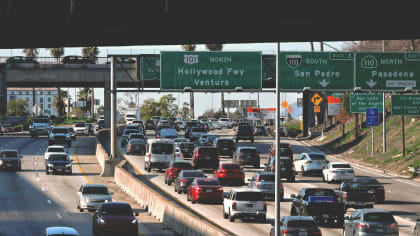BRAKING AWAY
OEM versus the Aftermarket
This article is from our archives and has not been updated and integrated with our "new" site yet... Even so, it's still awesome - so keep reading!
Published on Mon, Apr 23, 2012
By: The LACar Editorial Staff

By John Grafman
Seems like the public wants to pin the tail on the economy on someone or something. Maybe it’s the fault of the democrats, or the republicans, or maybe even the housing bubble and OPEC? Slipping under the radar is one other guilty party, the OEMs!
A funny thing happened in the past decade or two. The original equipment manufacturers, commonly known as the car companies, had a part to play in all of this, albeit in a strange way.
In the past few decades cars have become far more reliable. So, when the general population started to tighten their collective belts, new car sales suffered. After all, if the cars last longer and you’re on a budget, why buy a new car?
It used to be that if an owner needed new tires, the warranty was running out, or even if it was time to register the car, it gave a reason to buy a new car rather than dealing with the headaches and costs of the old one. What a difference a decade makes! No new car sales create a domino effect that ripples through the economy like a shockwave.
While the “don’t fix it, replace it” mindset used to work, the dynamics of car buying are changing radically. Length of car ownership has reached new records. This means we have to deal with issues we never had to, like replacing those worn out brakes.
For those that haven’t done this in a while, the expense of a simple brake job can be surprising. On an affordable ($20K or less) car, replacing the pads and rotors all the way around can total out with service to almost 1/20 the cost of the car itself. Surprisingly, besides the pads, the rotors have to be replaced, as the wear has reduced those down to the thickness of a kettle cooked potato chip.
Naturally, like lemmings, many head directly to the dealership. Certainly, the dealership has the parts that came with the car initially, and have more specific experience than some shade-tree mechanic, but at the end of the day it depends on the service technician. Then, there are those owners that think outside of the box. Once that happens, anything is possible.

We took this tack with a 2005 Mini Cooper. Mini USA is reporting sales of 4,980 new automobiles in February, an increase of 42.2 percent from the 3,503 sold in February 2011. Year-to-date shows an increase of 32.9 percent. This tells us that consumers still think this provides an economical form of transportations and offer an elusive bonus of being fun to drive.
Generally, this oversized roller skate is fairly reliable in part due to being lightweight. As a result the rear brakes get little wear on this front-wheel driver, nevertheless, like so many other cars, after 50K on the odometer, it’s time to replace.
This got us thinking, is there something better out there than what the OEM has to offer? Can we upgrade or find great value for the money and still maintain the original quality? There are some interesting possibilities.
We turn to the experts at StopTech and Centric. The phrase “racing improves the breed” couldn’t be truer. So, it’s no surprise that StopTech is a sponsor of the World Challenge series at the Toyota Grand Prix at Long Beach. What the company has learned and perfected for the track results in improved street products. The parts provide manufacturer’s equivalent or better specifications across the board.
Looks have little to do with how a disc works. Vane construction, chemistry, metallurgy, casting methods, and machining are the real factors. However, looks do count for something too when the car isn’t at speed.
The top dog in the StopTech portfolio is the Big Brake Kit. This offer anything an enthusiast could want including pads, larger than stock rotors, braided stainless steel hoses, and larger calipers with multiple pistons. This has the potential of making the Cooper hardtop a badass, track capable sports car, at least in the braking department. However, as the rest of the car is a far cry from that level of performance, it really would be overkill. Not to mention that this would not be in keeping with the overall characteristics of the car, or its day-to-day mission of being a fun and practical car.
The real trick for any car owner looking to have repairs or upgrades is finding the appropriate parts and service. StopTech does offer a number of vented discs including AeroRotors, SportStop, Power Slot, and Centric Premium brake rotors. We opt for the SportStop cross-drilled (also available with drilled and slotted rotors), which are produced from a high quality Centric Parts blank casting and finished in a durable e-coating for corrosion resistance.
Upgrading to the cross-drilled rotors allows for greater cooling and faster water displacement from the barking surface, and in preventing glazing of the pads. These also improve the bite for both better wet and dry braking. However, in comparing these while using the stock OEM’s calipers during dry barking conditions, any differences would be hard to gauge without very precise measuring equipment. On the flip side, with larger swept area and more pistons and greater surface area of the Big Brake Kit there is no doubt we can improve the braking distance.

Additional technology exclusively incorporated into the Power Slot and SportStop rotors use Power Alloy metallurgy. An increase in the molybdenum or carbon content of the castings, and carefully controlling the cooling rate during production allows the metal to reach set goals for hardness and tensile strength. Even the drilled hole patterns are specific for the left and right sides of the vehicle. Centric premium rotors feature a double disc ground, taper free finish, which ensures parallelism. In other words this creates near perfect disc thickness variation (DTV). This special finish also provides quieter and smoother stops. The vented disc brakes’ vane thickness symmetry promotes the uniform transfer of heat from both friction plates into the cooling vanes. Otherwise, with a lesser quality vane, uneven heat transfer occurs and compromises both cooling and performance.
For a very cost effective improvement, depending on the stock OEM brake lines, the StopTech braided stainless steel lines can offer a notable upgrade. The stainless steel doesn’t allow any expansion in the line when the brake pedal is depressed, so the pedal feel is more sensitive and direct. StopTech brake lines consist of a PTFE (commonly referred to as Teflon) inner line that carries the brake fluid, which is then covered with a layer of stainless steel woven braid.
StopTech also has a number of pads geared towards different driving styles. While they are all engineered to have minimal fade characteristics, the street pads provide a smoother and quieter stop. The more aggressive pads do sacrifice a bit on those counts in the name of a shorter stop. Again, we opt for a brake pad that fits the car, and is a little less aggressive. With a variety of pads types available it’s important to find the right blend of noise, dust, bite, pad life, fade resistance and other factors. Each driver has different priorities; so one size doesn’t fit all.
The pads offer Para-aramid composites that provide linear response regardless of pad temperature. 100 percent positive molded for uniform friction material density. Another plus for anyone is also the low dust formulation, which is 100 percent asbestos-free. These are even scorched to raise initial cold effectiveness and ease bed-in.
For the install we turned to Specialty Car Craft (SCC) in Los Angeles. Our vehicle looks somehow out of place among the other imports. The shop is a far from ordinary. A quick scan of the floor reveals a couple Bentleys, a few Ferraris, a Lotus, a pair of Lamborghinis, and even a TVR Tuscan waiting for repair work of one sort or another. Oh yes, and there are also a number of cars that are simply there for “modifications” such as the mat black Rolls Royce Phantom. The car looks a little familiar as this titillated the attendees arriving at the south hall of the SEMA Show last year.

But, it isn’t about the cars; it’s about the people. Specialty Car Craft definitely has an ace up its sleeve. The shop manager, Costantino Bertuzzi, is a successful former Ferrari pilot, and he has a long list of accomplishments to his name. He still spends more than his share of time behind the wheel of a race car. In so many words, he doesn’t screw around when it comes to performance and proper maintenance of cars.
After a few hours of R&R (remove and replace, not rest and relaxation) the new parts are installed by the tech. While most any service tech with grease under their nails can handle this, few would have the eye for detail that Costantino does. A test drive reveals that while the brakes are doing their job, it could be better. So, back to the shop, and after a little more tweaking and bleeding of the lines, Costantino goes back at it for another test drive. The result is a bit more responsiveness. Perhaps the Mini won’t be confused with a McLaren, but it’s no Schwinn either.
What we found was the cross-drilled rotors did initially create more noise than the standard disc as the pads pass over the drill holes. The sound is vaguely reminiscent of the ice under an Olympic speed skater going for the gold. Over time as the pad and disc break-in the issue decreases along with our sensitivity to this.
While the pricing at the dealership for parts runs around $135 for each stock front disc ($77 for rear disc), and $211 for a cross-drilled replacement, the MSRP on a StopTech cross-drilled disc is $142.85 ($105.65 for the rear), but we found a retailer locally that has the same part number for $100 plus tax ($74 for each rear). Similarly, the dealer price is $120 for the set of front brake pads, and $109 for the rear. MSRP on the StopTech set is $99.95, and the retailer was about $65. And while the MSRP on the stainless steel brake lines are about $85-92 dollars, the retail cost is about 30 percent less.
In retrospect, going with a more aggressive pad might be a better match up with the cross-drilled discs and the extra strength grip Bridgestone Potenza RE-01 tires, as well as that of drivers wishing for a firmer feel. The softer pad feels more in line with that of the OEM part.
Sure, the dealers do provide a suitable product. But, for those that want to push the envelope, finding better options to OEM parts and service is a way of life. And they are better off for it!

Find out more at stoptech.com/ and specialtycarcraft.com/




